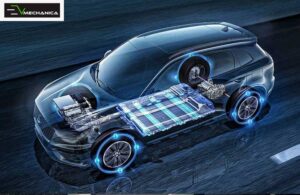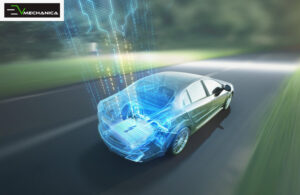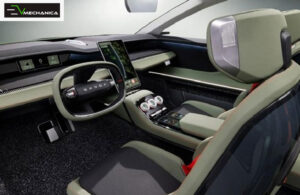 Defined as the utilization of digital technologies to transform traditional processes, products, and services, Digitalization in E-Mobility can enable the economic viability of this technology.
Defined as the utilization of digital technologies to transform traditional processes, products, and services, Digitalization in E-Mobility can enable the economic viability of this technology.
Digitalizing urban mobility enables people to access city resources, which further shapes their daily understanding of the cities and societies we live in.
As the current trend of urban mobility is centered primarily around Electric Vehicles, the rapid production and deployment of EVs must be tackled with a digital and data-led infrastructure.
This will allow automotive manufacturers the flexibility needed to secure future production locations and the building of electric architecture.
In other words, design and production facilities are now becoming more intelligent, connected and automated, thus increasing their reliance on IoT.
One of the biggest challenges facing electric mobility is the cost of battery technology. However, the Digitalization in E-Mobility can help reduce these costs by enabling better battery management and optimization. For example, digital technologies can be used to monitor battery performance and health, which can help extend battery life and reduce the need for replacements.
Additionally, digital tools can be used to optimize battery charging, which can help reduce energy costs and improve overall efficiency.
How is Digitalization Boosting E-Mobility?
 Digitalization in E-Mobility requires the development of key technologies that can advance the automotive sector towards a new age.
Digitalization in E-Mobility requires the development of key technologies that can advance the automotive sector towards a new age.
Battery Management and Optimization
Digitalization in E-Mobility can help reduce the costs of electric vehicles by enabling better battery management and optimization. Battery technology is one of the biggest cost drivers of electric vehicles, and digital technologies can help reduce battery degradation, extend battery life, and reduce the need for replacements.
Tesla’s battery management system monitors the performance and health of each battery cell in real-time and uses machine learning algorithms to optimize battery charging and discharge rates, which improves the battery’s overall lifespan.
Smart Charging Infrastructure
Digital technologies can develop smart charging infrastructure, that can help EV owners find and reserve charging stations, pay for charging services and monitor charging progress in real-time.
Key example of Digitalization in E-Mobility is ChargePoint that offers a mobile app that allows users to locate charging stations, start and stop charging sessions, and view charging session history.
Remote Vehicle Management
Digital tools can be used to enable remote vehicle management, which can allow owners to monitor vehicle performance, control climate settings, and even schedule charging sessions from their smartphones.
Taking another instance, Tesla mobile app enables the facility to its owners to remotely control their vehicle’s climate settings, lock and unlock their car, and to even start and stop their vehicle remotely.
New Business Models and Revenue Streams
 Digitalization in E-Mobility can help in creating new business models and revenue streams in the electric mobility industry.
Digitalization in E-Mobility can help in creating new business models and revenue streams in the electric mobility industry.
For example, General Motors launched a new business unit named BrightDrop, which offers electric delivery vehicles and related services to its commercial customers.
BrightDrop also offers digital solutions, like real-time location tracking and route optimization, to improve delivery efficiency and reduce costs for customers.
Ki Mobility Solutions, part of TVS Automobile Solutions Pvt Ltd had also announced a comprehensive digital mobility service platform for EVs.
With this, Ki Mobility offers its entire portfolio of solutions and pan-India network to help Indian EV manufacturers to jump-start their operations across the country.
Perks of Integrating Digitalization in E-Mobility
 Stating some of the notable benefits of leveraging the Digitization of Electric Mobility includes,
Stating some of the notable benefits of leveraging the Digitization of Electric Mobility includes,
Connected and Automated Mobility (CAM)
One of the key advantages of the Digitalization in E-Mobility is the introduction of Connected and Automated Mobility (CAM) that can make roads, railways and waterways safer. By optimizing the use of these vehicles and infrastructures, manufacturers can enhance efficiency, reduce congestion, and help to lower gas emissions.
CAM can also help in creating business opportunities and increase their competitiveness, while making transport more accessible to the elderly or people with disabilities, transforming travel in the years to come.
Mobility As A Service (MaaS)
By allowing seamless multimodal travel as well as facilitating access to greener alternatives, one can help to decarbonize transportation. Leveraging different transport modes, the Digitalization in E-Mobility would allow more efficient use of resources and can save time and costs for passengers and transporters.
Interchanging Mobility Data
One can enhance the synchronization between different transport modes and infrastructures by pooling and exchanging mobility-based data. Accessing large pools of data can further fuel the development of AI-driven applications. Access to mobility data can then create new sources of value like car sensor data, that can be highly valuable for insurance, navigation, or road maintenance companies.
Supporting Transition to Zero-Emission Mobility
AI can enhance the energy efficiency of electric or hydrogen vehicles and optimize the deployment of charging infrastructures. Bi-directional EV charging could provide flexibility to the grid, making it possible to optimize energy usage and production while better integrating renewable energies. Digitalization in E-Mobility will further enhance the adoption of EVs.
